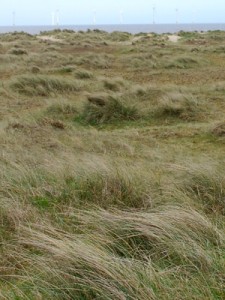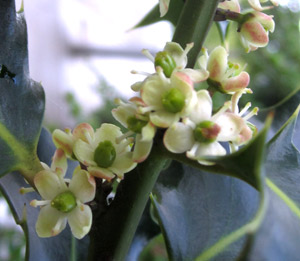The Natural History Museum – a summer walk

We recently had an email from Hannah Wise at the Natural History Museum. She felt that as our blog deals with many aspects of the British countryside that we might like their short films / videos featuring Natural History Museum botanist Dr. Fred Rumsey. Each film is only a few minutes long and Dr.Rumsey talks about some seasonal flowers and plants that you can discover out and about in the UK.
The latest films are Summer Walk and The bee orchid. In the summer walk, Dr. Rumsey discusses coastal plants and their adaptations as found at West Wittering Beach in West Sussex.Plants help shape our coastline by stabilising sand dunes and mud flats – for example Marram Grass (Ammophila arenaria) and others that have long runners or rhizomes. Plants featured include sea bindweed, sand sedge, glasswort (aka – samphire, in certain restaurants), sea lavender, sea heath, sea holly (an Eryngium, not unlike those found in gardens) and sea knotgrass.
In the bee orchid, he discusses the nature of orchids and their peculiar and specific adaptations for pollination – how the form of the flower mimics the body of a bumblebee – in order to lure insects to the flower (it also emits a scent to encourage visitors). The bee and late spider orchid may be found on the North Downs.
 Apart from these films / videos there are seasonal walks. The Spring Walk is set in Warley Place Nature Reserve, near Brentwood in Essex – and here Dr. Rumsey discusses wild daffodils (Lenten Lily), snake’s head fritillary, the fruit heads of fungi, Camellias (related to the tea plant / bush), bluebells and lungwort (good sources of nectar for early insects) – and think the Doctrine of Signatures.
Apart from these films / videos there are seasonal walks. The Spring Walk is set in Warley Place Nature Reserve, near Brentwood in Essex – and here Dr. Rumsey discusses wild daffodils (Lenten Lily), snake’s head fritillary, the fruit heads of fungi, Camellias (related to the tea plant / bush), bluebells and lungwort (good sources of nectar for early insects) – and think the Doctrine of Signatures.
The winter walk is set near to Tring (the NHM’s outpost in the country) and discussion focuses on Holly trees (male and female), sweet chestnuts and Norway Spruce.
Comments are closed for this post.
